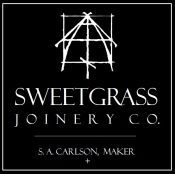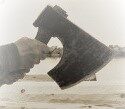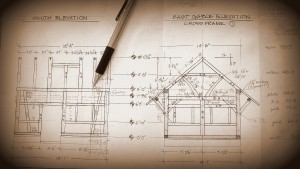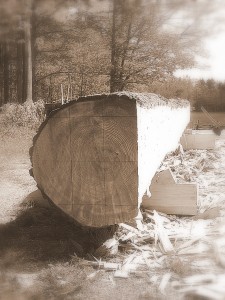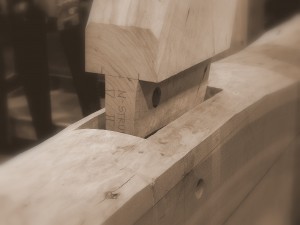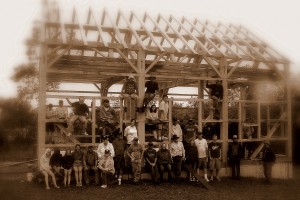Ethos
“SHALL THE AXE BOAST ITSELF AGAINST HIM THAT HEWETH THEREWITH?…”
Isaiah 10:15
My designs, choices of material, and methods of work are all guided by & grounded in:
A Sacramental/Eucharistic life
A reverence and respect for the past combined with a sense of responsibility and accountability towards the future.
A compelling desire to craft objects both useful & beautiful that will serve and inspire mankind while gracefully enduring the passage of time.
A need to creatively integrate and balance the wisdom embodied in tradition with current patterns of living and contemporary architecture, recognizing both as mutually relevant and potentially complementary, but never exclusive.
D E S I G N
p r e c e d e n t s & p a t t e r n s
The patterns of my timber-work are inspired and influenced by many different cultures. The primary influence upon my overall design and joinery choices arise from English roots. Heavy timber carpentry evolved with the changing uses and architectural styles of buildings through the mid 19th Century. Consequently, historical examples and precedents abound and I rely wholeheartedly upon these as guides in developing design.
I do not offer stock plans, but prefer to combine your ideas and wishes with sound traditional underpinnings to create a custom design. This results in a unique & personalized building, but still anchors the building in a time proven pattern. I typically offer shop drawings of the timber-framework. I still draft by hand with paper, pencil, and a t-square – without the aid of a computer. Upon your request, I also offer my shop drawings approved & sealed by a registered structural engineer. Quite often this is a necessity in order to secure local zoning and building permits.
Because framing in heavy timber is not overly common in this day and age, I often find it necessary to work closely with you, your architect, and your contractor. I’ll gladly recommend both architects and contractors that I’ve worked with and who I feel are sympathetic towards the traditional craft. From start to finish, this ensures that the timber-work portion of your project is creatively and successfully integrated into the whole project.
Ultimately, I prefer to offer only traditionally joined and structurally functional timber-work – avoiding the seemingly more popular, and often cheaper, “cosmetic” & faux varieties.
M A T E R I A L S
t h e f a b r i c
I prefer to use locally grown, harvested, and milled timber in a variety of hardwood and softwood species; hand-hewn, rough-sawn, or hand-planed. My frameworks are typically joined in unseasoned “green” timber. These simple attributes lead to a framework that has inherently low embodied energy and ,ultimately, a more minimal impact on our environment. I really try to keep it local. Local woodlots offer a great diversity of timber, each species having unique qualities that lend integrity and interest to my timber-frames.
J O I N E R Y
t h e e s s e n c e o f t h e c r a f t & o f t u n s e e n
Joinery is the means by which one timber is joined to another. It is also one of the primary elements that often differentiates traditional heavy timber carpentry from its more widely used modern cousin, “post & beam” construction.
I utilize historically documented, full-wooden joinery secured with hand-riven pins & wedges. Furthermore, I try to avoid the use of steel fasteners and steel plates to the best of my ability. The past has given us an abundance of joinery choices, some better suited than others for specific circumstances that arise in design. These choices keep my work both interesting and creative.
The overall structural integrity of a timber framework relies, in part, on the individual integrity of each joint union.
This integrity comes through proper design and skillful joining. I use both hand-tools and hand-held power tools in my daily work – not limiting myself solely to one or the other. I thoughtfully balance the use of both old and new tools, methods, and finishes without sacrificing the integrity of the timber-frame or compromising the soul of the craft.
R A I S I N G
j o i n i n g t o g e t h e r
The raising, the erection of the timber-work into a frame, is the culmination of the timber-frame portion of your project. The raising gives opportunity for all to be involved…family, friends, and community. I still prefer to “hand-raise”, the more traditional approach. However, circumstances may be such that the assistance of a crane is in the best interest of the project. Safety is paramount.
Typically, the frame is transported from my little shop to your site followed by several days of organizing and the assembly of parts of the framework. This precedes raising day. Usually, most frames are raised in a single day. Of course, this is all dependent on the size and complexity of the framework, the method of raising, and the number of helpers.
